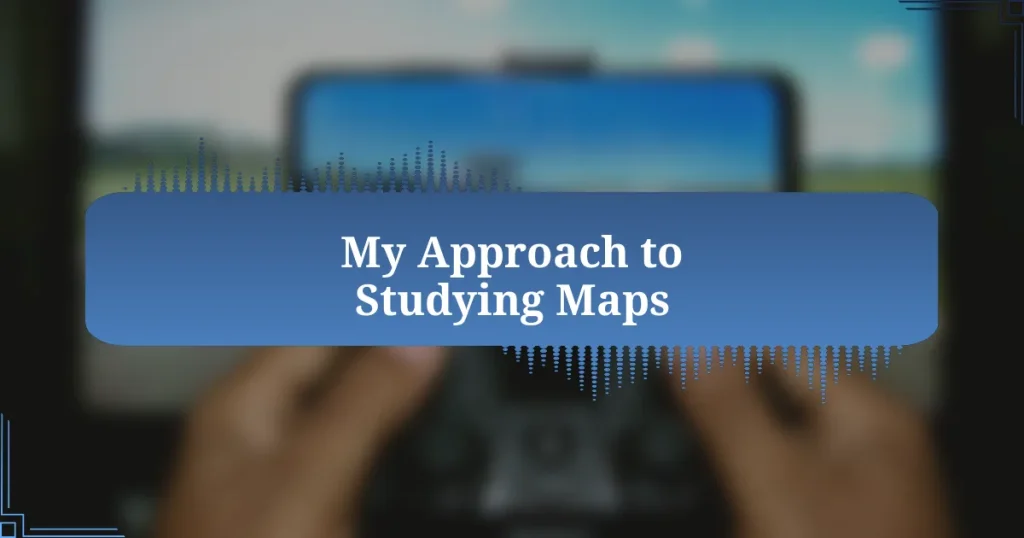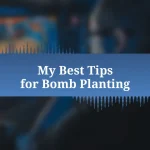Key takeaways:
- Map knowledge is essential in Counter-Strike 2, enhancing gameplay and building confidence through understanding key locations and strategies.
- Breaking down maps into sections, using in-game tools, and reviewing professional gameplay are effective strategies for mastering map layouts.
- Community engagement and feedback can provide valuable insights, transforming how players approach and navigate maps.
- Applying map knowledge in real matches leads to better decision-making, allowing players to anticipate enemy movements and react effectively under pressure.
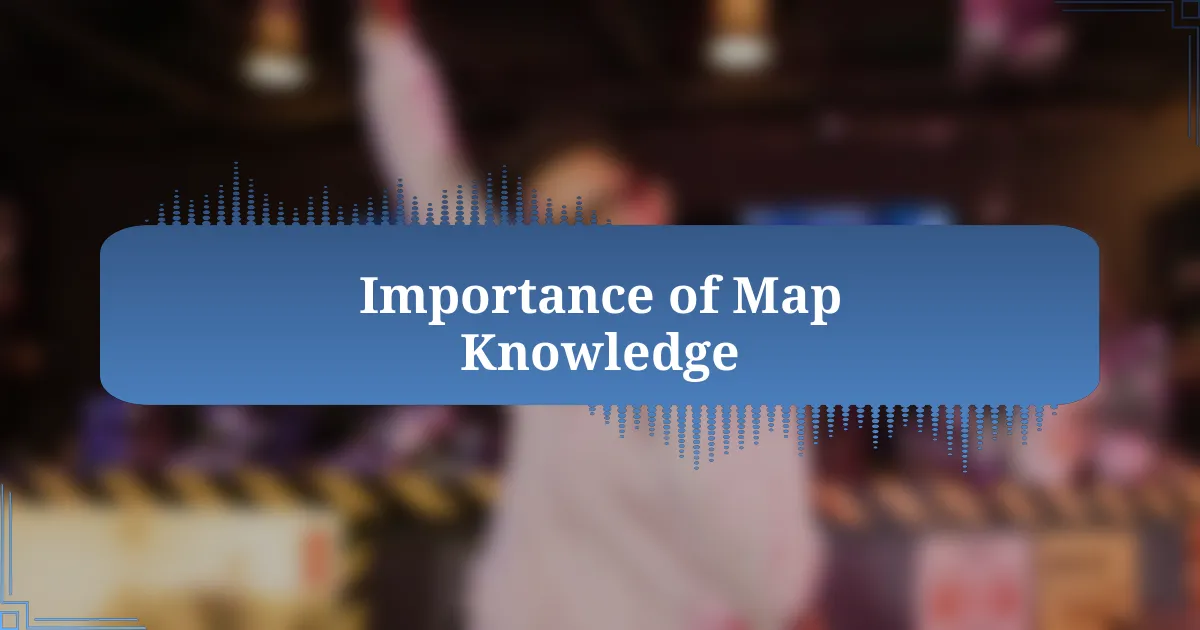
Importance of Map Knowledge
Map knowledge in Counter-Strike 2 is absolutely crucial. I remember my early days, wandering aimlessly on maps like Dust II, feeling lost and overwhelmed. It’s like entering a labyrinth without a compass; without knowing the layout, you become an easy target.
Understanding each map’s geography not only enhances your gameplay but builds your confidence. I once had a match where my teammates were fumbling around, and because I recognized key choke points and hiding spots, I was able to strategically lead our team to victory. It’s moments like these that emphasize how map familiarity can turn the tide in a match.
Think about it: how often have you found yourself stuck in a corner, unsure of your next move? By investing time in learning maps, you transform those moments of uncertainty into opportunities for tactical play. That sense of empowerment when you can navigate with ease? Priceless.
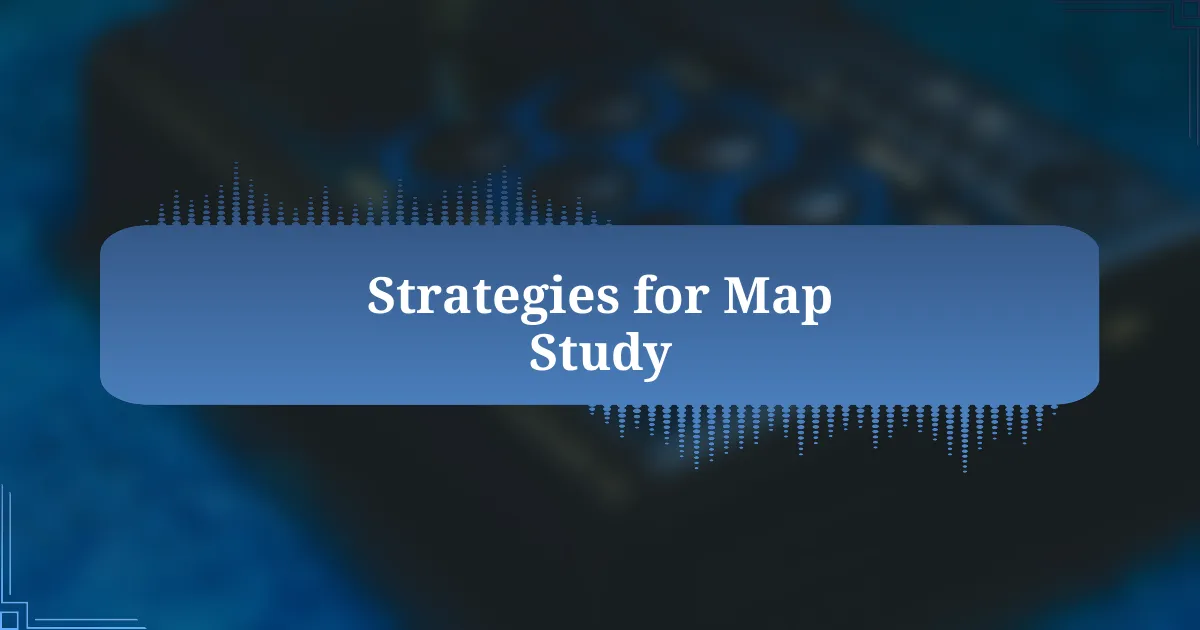
Strategies for Map Study
When it comes to studying maps, I’ve found that breaking them down into sections works wonders. For instance, I focus on one area at a time—like the bomb sites on Inferno—so I can truly understand the nuances of every corner and angle. It’s almost like memorizing a song; once you have the verses down, the chorus becomes easier to sing along to.
Another strategy I employ is utilizing in-game tools, like the map overview during warm-up matches. I look for routes and sightlines while aiming to visualize how I would approach different scenarios. There was a match where a friendly rivalry spurred me to practice rotating through a site efficiently, and I was amazed at how much faster it boosted my reaction times. Has anyone else felt that thrill when a practice session pays off in an actual game?
I can’t stress enough the value of reviewing professional gameplay or tutorials. Watching how top players navigate the maps always opens my eyes to tactics I hadn’t considered. I remember being awe-struck when I saw a player execute a perfect smoke grenade on Mirage, creating a wall of cover that changed the whole match. It’s these moments that inspire me to refine my approach and think one step ahead.
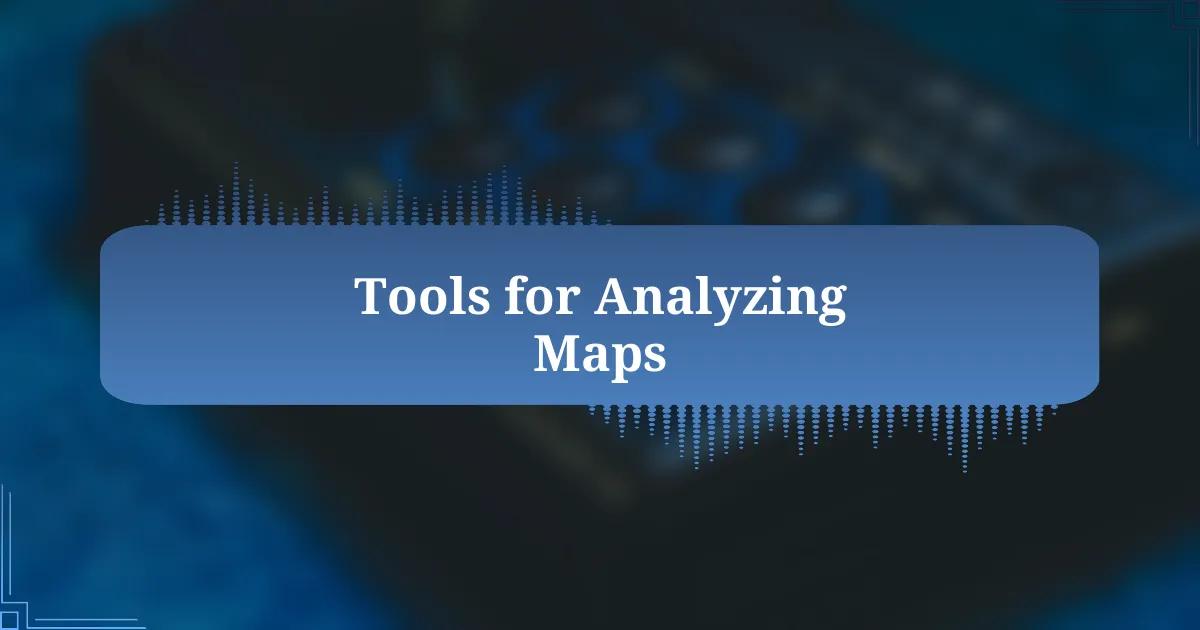
Tools for Analyzing Maps
When it comes to tools for analyzing maps, I find that software like Google Maps or even dedicated map viewers for Counter Strike can be a game-changer. Using these tools, I can zoom in on specific locations and assess choke points, making it easier to devise my strategy. Have you ever sat down with a map and discovered elements that completely changed your approach?
Another powerful resource is the use of analytical websites and community forums. Engaging with others who study the same maps gives me fresh perspectives. I once stumbled across a discussion on an overlooked corner of Dust II, which completely transformed how I play the map—it felt like unlocking a hidden level in a video game!
Additionally, I can’t overlook the benefits of creating my own custom maps. It’s tedious at times, but by building out scenarios I struggle with, I gain invaluable insights. I remember shaping a layout for a clutch situation, and practicing it repeatedly helped my confidence soar during actual matches. How great is it to feel that you’ve turned a weakness into a strength through hands-on experience?

Tips for Effective Map Learning
One effective technique I employ for map learning is breaking down the layout into smaller sections. Instead of trying to memorize an entire map at once, I focus on one area, such as the bomb site or a specific route. I often recall the first time I did this on Mirage; I played the game repeatedly just to get comfortable with the A site. By isolating sections, I found myself navigating the map with ease and confidence.
Another tip is to actively play with a purpose. As I hop into matches, I set specific goals, like mastering grenade throws at certain points. I remember during a session on Overpass, I decided to practice my smoke grenades. After several attempts, not only did I feel a surge of accomplishment, but I also noticed how it greatly influenced my gameplay. Have you set goals for yourself while studying the maps? Trust me; it makes a world of difference.
Finally, reviewing gameplay videos has significantly improved my understanding of map dynamics. Watching top players navigate the maps highlights strategies I never considered. There was a match I analyzed where a pro player made a clever play at B site on Nuke, which inspired me to adjust my positioning in the same spot during my next game. It’s fascinating how much you can learn when you observe others in action!
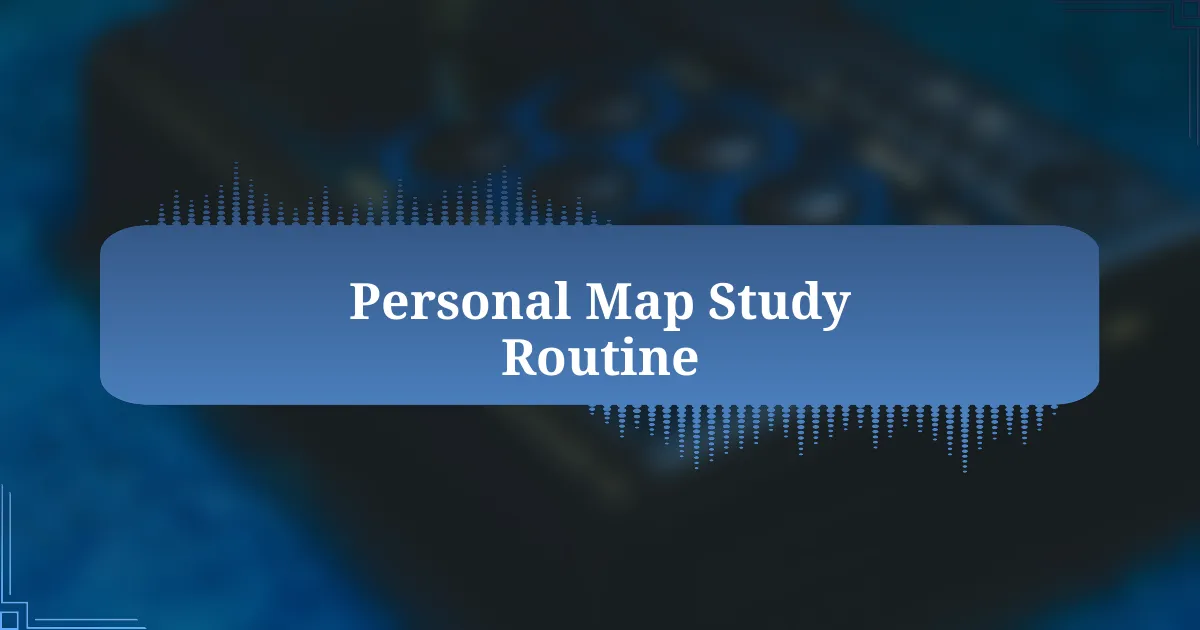
Personal Map Study Routine
When it comes to my personal map study routine, I prefer to create a structured schedule. I dedicate certain days to specific maps, allowing my brain to focus solely on the nuances of each layout. I still vividly remember my deep dive into Ancient; setting aside two days just to explore the unique pathways and choke points made a huge difference in my gameplay. Have you ever set aside dedicated time for a map? I found that consistency helps solidify the information and instincts I need during matches.
Additionally, I leverage community resources to enhance my learning. Joining discussions in forums or watching streamers has provided me with insights I wouldn’t have discovered on my own. One memorable moment was when a streamer dissected a play on Dust II, showing how a seemingly minor angle could be the difference between victory or defeat. That sparked a revelation for me: it’s in the details where games are won. Engaging with others not only deepens my understanding but also fuels my passion for improving my skills.
Finally, I make it a habit to simulate in-game scenarios during my practice. I’ll set up specific drills in custom games, like holding an angle or retaking a site under different conditions. I recall once practicing on Inferno, where I repeatedly challenged myself to respond to various enemy approaches on B site. Those moments of adrenaline rush and rapid decision-making were pivotal; they prepared me for real match situations and built my confidence. How do you prepare for unexpected encounters in-game? Tailoring your practice to replicate those instances can redefine your map knowledge.
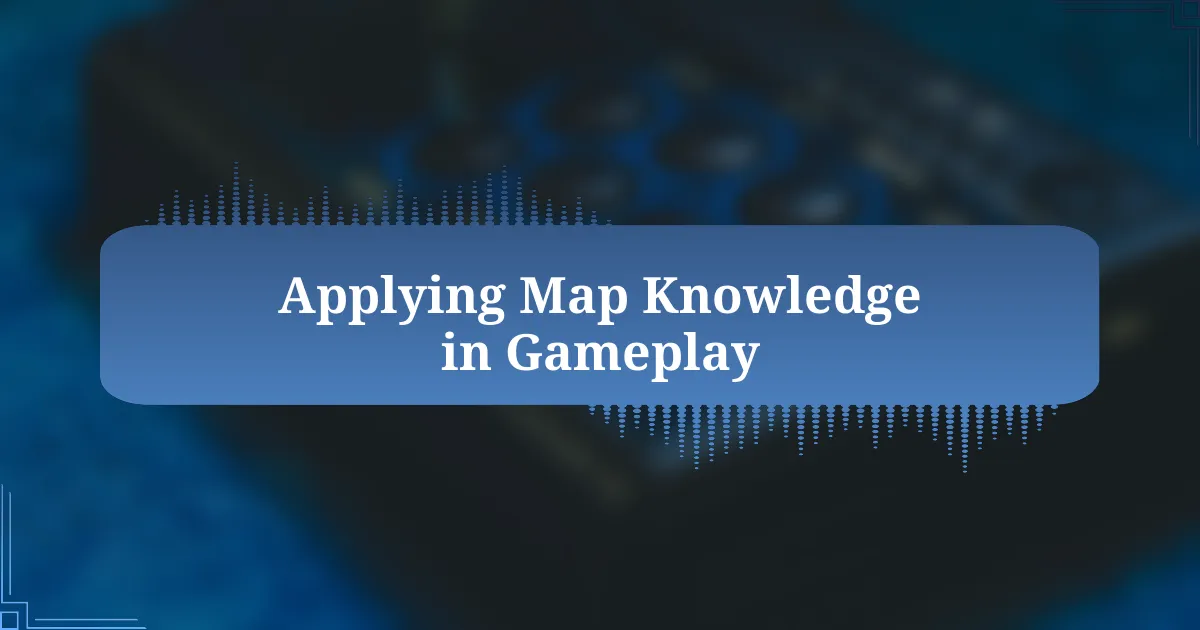
Applying Map Knowledge in Gameplay
Applying map knowledge in gameplay is where the real magic happens. I remember one intense match on Mirage where my understanding of the mid-area entirely shifted the game’s outcome. I used my awareness of common enemy positions to anticipate their movements, allowing me to secure key frags. Does it often happen to you that map knowledge gives you that unmistakable edge?
Every time I enter a match, I mentally map out my strategies based on past plays. There’s something about recalling the flow of rounds on maps like Overpass that informs my decision-making. I find myself asking, “How can I leverage my understanding of sightlines today?” That question leads my gameplay in a way that feels connected and purposeful. It’s like having an internal compass guiding me through the chaos.
In clutch situations, my familiarity with the terrain becomes a lifeline. I recall a nail-biting moment on Nuke where I had to decide between pushing or playing it safe. My knowledge of the map allowed me to evade my opponent seamlessly. By visualizing my escape routes, I transformed pressure into tactical advantage. How do you manage your decision-making under pressure? It’s a skill that can only be refined through deep map understanding and experience.











